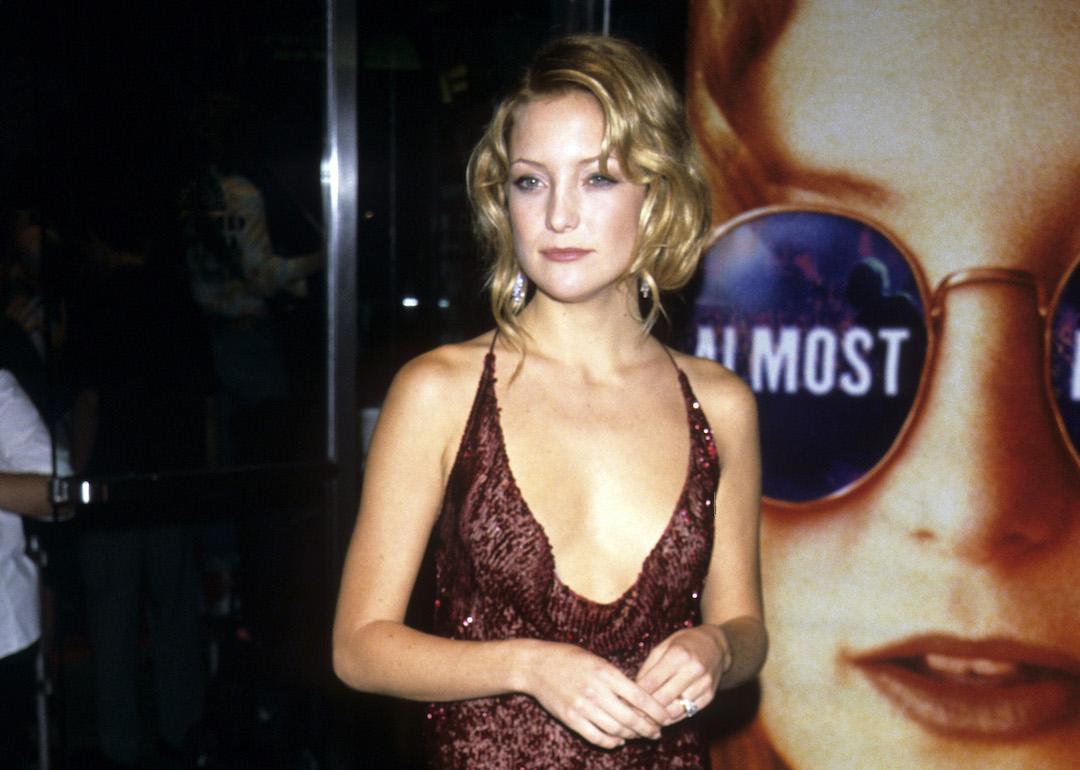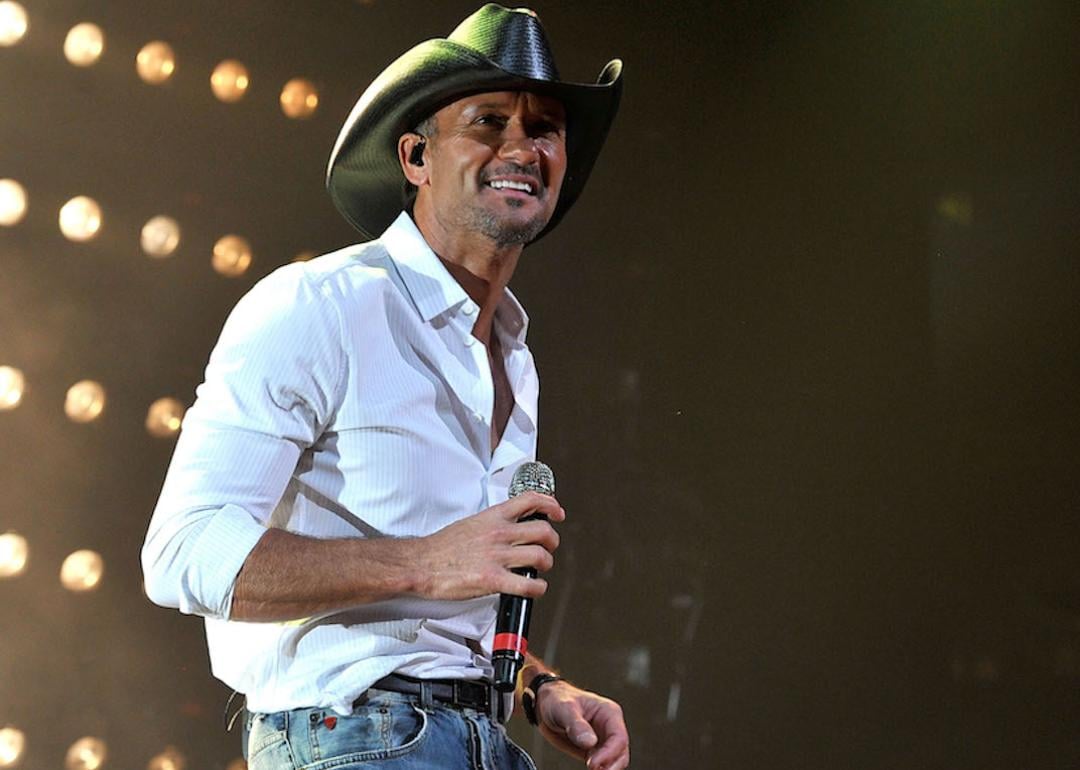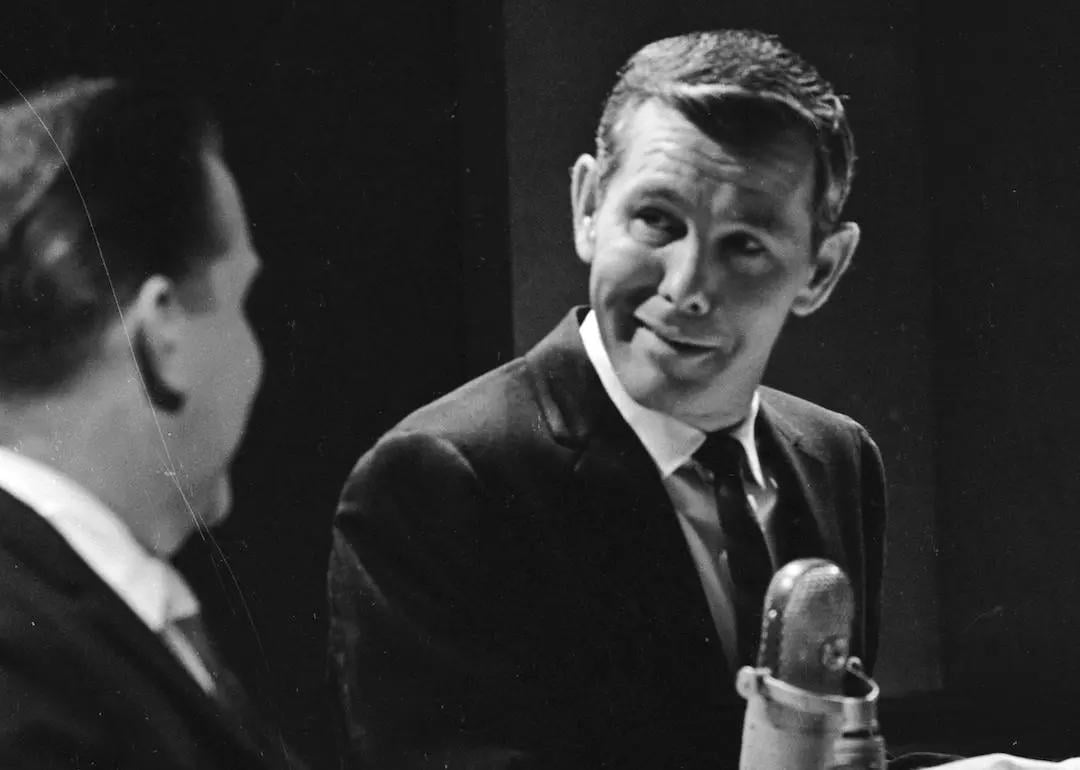
Movie monsters throughout history
Movie monsters have been around almost as long as movies themselves. The first American films and nickelodeons showed monstrous beings in addition to comedic fare. Early stop-action effects allowed bodies to stretch, be blown apart, and then reanimate, often substituting macabre skeletons for humans. In France, Georges Méliès' 1902 "A Trip to the Moon" features Selenites, moon men, which are regarded as cinema's first aliens.
Moviegoers have always been fascinated by monsters, casting them as the "other," a creature marked by abnormality or deformity. While this figure is often terrifying and inhuman, part of any monster's allure is in the way it exudes humanity. Movie monsters are not always terrifying. Often, they can seem more human than the people who run from them or gaze in horror.
Cinematic monsters often represent society's deepest fears as a way to provide commentary on harrowing cultural events. The monster is the stuff of nightmares unleashed upon a world in order to harass, destroy, and make sense of pernicious histories. Monsters often crave blood and decimation. They pursue violence and revel in the grotesque. They represent the worst parts of human instincts. Audiences detest monsters at the same time they find them fascinating. Movie monsters are terrible, but there's something about them that makes it impossible to look away.
Movie monsters represent what film scholar Robin Wood, drawing on Freud, called "the return of the repressed" in his influential essay. In the conventional horror film, the monster figure will arrive as a threat to the status quo. Often, the monster ends up battling another archetype, one scholar Carol J. Clover theorizes as "the final girl," a female protagonist who either defeats the beast or loses to it. Clover offers that while the final girl seems a feminist hero, she's also one with whom male viewers strongly identify. Further, scholar Barbara Creed finds "the monstrous-feminine" in horror films where the abject villain represents a fear of women and their power.
Issues of gender, race, class, and sexuality are almost always at play with movie monsters because they stand-in for the tensions and horrors of the cultures that produce them. Movie monsters bring forth trouble and fear. They make us ask, who or what are you? And the answers become complicated fusions of discomfort and terror that are also deeply appealing. Monsters are the creatures we both abhor and adore—and that adoration says something about the monstrosity at the core of being human that we'd all rather forget.
With that in mind, Stacker compiled this list of some of the most iconic monsters in movie history. Read on to see if your favorite made the cut.
You may also like: Greatest villains of 20th century cinema
Cesare, 'The Cabinet of Dr Caligari' (1920)
This silent-era masterpiece produces one of the first zombie-esque monsters in the sleepwalker Cesare. Using a German Expressionist aesthetic, “The Cabinet of Dr. Caligari” is thought to represent the national mindset that allowed the rise of Nazism by presenting a community “sleepwalking” and allowing unspeakable horrors to occur. The striking expressionistic sets were an extension of the psyche of the murderous sleepwalker—uncanny, atilt, and primed for mindless violence.
Count Orlok, 'Nosferatu' (1922)
This early vampire became iconic due to his arresting visual presence. Using the haunting style that would emblematize the German Expressionist film movement, the vampire is a creature of shadow and menace. With long nails, severe ears, and a dark visage, Nosferatu represents the irrepressible dread we’d rather keep hidden that instead manifests in a terrorized world.
Satan, 'Häxan' (1922)
This Swiss-Danish film was banned in the U.S. after it was deemed too blasphemous and shocking for American audiences. The director, Benjamin Christensen, played the Devil himself in this strange film about the persecution of witches throughout history that’s filled with surreal imagery intended to shock, offend, and scare audiences.
Dracula, 'Dracula' (1931)
Bela Lugosi stole the show in the early vampire movie based on Bram Stoker’s novel “Dracula.” The screen star played the mysterious Count with austere charisma and a formality that influenced later remakes about the mythic bloodsucker. The vampire monster represents aspects of contagion and seduction, as well as the allure of dark deeds like feeding on humans in whatever form it takes.
Frankenstein's monster, 'Frankenstein' (1931)
Frankenstein's monster, created from body parts of the dead and never named, offers the quintessential creature, both tragic and horrifying, yet still oddly relatable. Based on Mary Shelley's gothic novel, "Frankenstein" explores themes surrounding the monstrous uses of technology, as well as the binary between inner darkness and humanity. The creator becomes as wretched as the thing he's invented or birthed. Frankenstein's monster proves to be horrific, but also human at its core.
Imhotep, 'The Mummy' (1932)
Boris Karloff brings somber humanity to his rendition of the 3,700-year-old mummy revived by unwitting archeologists. Using expressionistic style to create striking black & white compositions, this Universal Studios version of the classic Egyptian monster influenced future franchises. Karloff’s wrinkled visage and searing eyes, seen in menacing close-up, gave the monster a strange humanity audiences can’t help but root for even as they fear it.
Murder Legendre, 'White Zombie' (1932)
Considered one of the first films in the zombie genre, “White Zombie,” stars Bela Lugosi as Murder, a voodoo master who enslaves black Haitians making them docile workers in his sugar cane mill. When a white woman, Madeleine (Madge Bellamy), arrives on a neighboring plantation, a man enlists Murder to turn her into a zombie so she’ll do as he pleases. The empty-eyed woman behaves in a trance-like state, exposing the blank docility that some wealthy white men seem to want from women and workers. Murder takes the fall for a system of exploitation that enslaves and oppresses minorities by “zombifying” them.
King Kong, 'King Kong' (1933)
The tragic creature King Kong is known for its profound humanity, despite existing as a series of trick shots and stop motion effects. When Kong falls from the Empire State Building, it’s a melancholic, fatal swoon, not a triumphant slaying. Here, the “beast” is misunderstood—captured, enslaved, and killed by the capitalist impulse to monetize horrific spectacle. When King Kong finds the screaming woman (Fay Wray), the creature displays compassion and love.
The Bride, 'Bride of Frankenstein' (1935)
“Friend?” asks Frankenstein's monster, as he approaches his newly created Bride. She’s played by the inimitable Elsa Lanchester, who rejects the creature with a scream. The scene dramatizes fears around unrequited love and the rage of women. The film offers a critique of the Eve origin story, recasting the creation of a female mate as perverse and horrific.
Countess Marya Zaleska, 'Dracula's Daughter' (1936)
Gloria Holden plays the titular vampire with somber intensity in this follow-up to "Dracula." She's a notable queer monster who brings a lesbian subtext to the usually cis male role. The countess tries to resist her murderous urges but ultimately succumbs to bloodthirst.
The Wolf Man, 'The Wolf Man' (1941)
Lon Chaney Jr. stars as the terrifying beast, a man who accidentally kills another lycanthrope, and in doing so, becomes one himself. The thick make-up and furry appendages create a tragic figure forced to confront his crime and its consequences. This Universal monster film was the first major entry in the cinematic mythology of the werewolf.
Irena, 'Cat People' (1942)
Simone Simon plays Irena, a woman who transforms into a murderous panther when aroused by desire or jealousy. The film dramatizes the monstrous fears around female hunger and power, casting lust as sinister and dangerous, while at the same time beautiful and enticing.
The Beast, 'La Belle et la Bête' (1946)
Jean Cocteau’s French adaptation of the classic fairy tale ("Beauty and the Beast") presents the familiar story of a prince transformed into a beast as moral punishment. The film’s style is baroque and surreal giving an ornate beauty to the proceedings. The Beast is hideous, but in possession of a haunting humanity and irresistible allure.
Gojira, 'Gojira' (1954)
The creature in Ishiro Honda’s masterpiece represents the horror of the atomic bomb. The original Japanese film would be recut and recast before becoming “Godzilla” in the U.S. The prehistoric monster was obviously, at times, a man in a suit walking through small models of a city. Thematically, Gojira’s skin resembles a keloid scar, similar to the burns of bomb victims. In the Japanese original, the creature represents the trauma wrought by the bombings of Hiroshima and Nagasaki, but it displays these themes in a B-movie style that’s poetic and powerful, with a cry of anguish beneath the rampage.
Giant ants, 'Them!' (1954)
This '50s-era creature feature was a product of post-war paranoia in the atomic age. In this classic, giant radioactive ants arrive to terrorize a community. Known as "Them!" these enormous monsters represent fears of technology and foreign invasion epitomized as mindless insects.
Gill Man, 'Creature from the Black Lagoon' (1954)
In this 3D monster classic from Universal Studios, the creepy “Gill Man,” the last of his kind from an underwater tropic, gets captured by seamen. When all the men fall in love with the same girl, the creature fights for his right to have her. Iconic underwater cinematography provocatively captures the woman swimming above in shots that later influenced the opening of “Jaws.”
Rhoda, 'The Bad Seed' (1956)
Rhoda offers a counterpoint to figures like Pollyanna—young girls who exude sweet obedience and virtue. In contrast, Rhoda is an 8-year-old murderess—callous and sociopathic, killing another child and a neighbor without remorse. However, the source of her evil, the “bad seed” of the title, links to her haunted mother who fears her own heredity. The child monster here plays on fears surrounding uncontrollable and unknowable genetics and the terrors of parenting.
Cyclops, 'The Seventh Voyage of Sinbad' (1958)
Ray Harryhausen’s monsters are iconic for their delightful, charismatic actions, such as the movements of the sword-wielding skeletons in “Jason and the Argonauts.” The Cyclops monster in “The Seventh Voyage of Sinbad” exhibits the natural charm of stop motion animation and rear screen effects. Created from a detailed monster model, the figure exudes anguish when stabbed and speared, as well as a sense of humanity even as it crushes tiny, hapless men with a giant tree trunk also made of clay.
The blob, 'The Blob' (1958)
This camp B movie epitomizes creature features of the atomic age. It features an amorphous, ginormous pile of goo that expands as it rolls over victims and jellifies them as they become part of its gory pink ooze. The alien creature represents the parameters of fear itself—always morphing, all-consuming, inescapable—yet also somehow fun.
Dogora, 'Giant Space Monster Dogora' (1964)
Known for its stunning monster imagery, Ishirō Honda's creature movie for Toho Studios, focuses on themes of radiation peril that also marked his more famous monster, Gojira. Dogora resembles a giant, city-sized, irradiated jellyfish-like octopus. It's long, creepy tentacles flow across a cityscape promising mayhem and chaos.
The Dead, 'Night of the Living Dead' (1968)
George Romero’s famous zombies from this 1968 classic were notable for their myriad representations. They were both “them” and “us,” as evinced in a scene where a daughter eats her father’s arm while her crying mother looks on in horror. The zombies also seem inscribed in the men sent to kill them—men who don’t recognize the black protagonist (Duane Jones) as human in a film that dramatizes the conflicts and horrors of the 1960s, such as Vietnam and the civil rights movement in addition to profound social unrest.
Mamuwalde, 'Blacula' (1972)
This blaxploitation horror film starts with African Prince Mamuwalde (William Marshall) asking Count Dracula to intervene in ending the slave trade. Instead, the Count curses him and confines him in a coffin where he’s unleashed 200 years later in Los Angeles ready to suck some blood.
The Demon Pazuzu, 'The Exorcist' (1973)
Linda Blair plays Regan, a 12-year-old girl possessed by an ancient demon bent on harassing priests and creating havoc. Once she’s taken over, Regan exhibits profane mayhem including a spinning head, deep-throated voice, plenty of vomit, and blasphemy. Because the monster possesses a young girl, it’s tinged with anxieties related to puberty and female power.
The Shark, 'Jaws' (1975)
Film scholar Barbara Creed argues that the man-eating shark in “Jaws” symbolizes an antagonist that’s feminine, as suggested by the notorious movie poster that links a bikini-clad woman with a terrifying open-mouthed monster. The shark represents threats always lurking beneath the surface. During screenings, viewers feared bites to their legs, despite being nowhere near the water.
Carrie, 'Carrie' (1976)
The telepathic heroine Carrie (Sissy Spacek) is a monstrous rendering of the terrors surrounding puberty in girls. When she's covered in pig's blood in an awful prank, she can no longer control the full force of her telekinetic powers. She wreaks havoc on the prom crowd and on her mother—two forces who ridiculed her period, her desires, and her power.
Michael Myers or The Shape, 'Halloween' (1978)
The serial killer monster is a staple of the horror genre. In the first installment of the “Halloween” franchise, we meet Michael Myers, a child murderer and escaped mental hospital patient keen to kill more teens in his hometown. The silent, masked monster is unkillable, a force of creepy, inescapable peril always just around the corner. His trademark mask, Captain Kirk from “Star Trek” painted white, makes him a surreal executioner of wayward teens.
The Alien Xenomorph, 'Alien' (1979)
The original Alien monster represents fears around reproduction and the body, perfectly mapped onto a foreign organism that morphs and multiplies. Before the creature grows into its slimy, long-skulled final form, it bursts through a stomach in a violent birth as it looks for hosts and places to lay more eggs in a startling parasitic manner.
Nola, 'The Brood' (1979)
Nola, a woman with multiple exo-wombs containing deformed embryos represents monstrous, maternal power. The imagery of Nola displays her as both angelic and horrific—she’s the pure vestal of conception, yet simultaneously a monster. In David Cronenberg’s horror film, inspired by his real-life divorce, Nola gives birth to monstrous and murderous children, extensions of rage discovered during therapy sessions.
Jason Voorhees, 'Friday the 13th' (1980)
Hockey masks are forever creepy thanks to Jason, the slasher of the “Friday the 13th” movie franchise. In this first installment, the character exists in a vision of a drowned boy who died because a pair of camp counselors shirked their duties by having sex. His mother must avenge him, but in the future franchises, he returns to punish as well.
Freddy Krueger, 'A Nightmare on Elm Street' (1984)
The iconic monster Freddy Krueger burst into the cultural mindset in 1984, embodying a horror that can't be escaped. He's a gruesome figure who morphs and adapts, freed by the surreal landscape of dreams from which no one can wake up. Krueger's iconic striped sweater, fedora, melted skin, and knife fingers make him a foreboding, grisly monster.
The Kraken, 'Clash of the Titans' (1981)
The Kraken in “Clash of the Titans,” is a deep-sea monster who must be appeased with virgin sacrifice. The monster is slain only by another, more powerful monster as the humans Perseus and Andromeda observe the larger epic struggle. The Kraken (engineered by Ray Harryhausen) gets unleashed, but turns to stone when faced with Medusa’s severed head, still animated and imbued with rage despite her decapitation.
The Thing 'The Thing' (1982)
John Carpenter’s harrowing adaptation of the 1938 novella “The Thing from Another World,” offers a monster that can morph, taking on the shape of the things it kills. The idea of a lurking alien that imitates its victims ramps up paranoia and mistrust in the glacial outpost where the all-male cast (including Kurt Russell) contend with the monster. The creature itself, designed by Rob Bottin, was a slimy, spidery creation. In the defibrillator scene, it turns a human chest into a gaping, arm-eating maw, epitomizing fears of the unknown.
Toxie, 'The Toxic Avenger' (1984)
The monster in this cult hit, modeled on cheesy B films, gets transformed after landing in a barrel of toxic waste. A former nerd, Toxie now finds himself hideous—but superhuman—and transforms into a hero fighting crime and oppression.
Seth Brundle, 'The Fly' (1986)
The Jeff Goldblum remake is just as iconic as Vincent Price’s 1958 version. The monster is a hybrid fusion of man and insect. Goldblum stars as Seth Brundle, who becomes a grotesque representation of hybridity once the biologic merges with cutting edge technology. As a fly he exhibits abject horror and represents the audience’s worst fears around both contagion and arrogance.
Pinhead, 'Hellraiser' (1987)
Clive Barker's film produced an iconic, unforgettable monster in this genre story about a puzzle box that offers a portal to hell. Doug Bradley portrayed Pinhead as a wry, controlling villain dressed in a leather gown with a head covered in rows of sharp pins. The merciless, somewhat bureaucratic monster harvests humans for torture in hell.
The Predator, 'Predator' (1987)
Macho military men played by bulked-up actors Arnold Schwarzenegger, Carl Weathers, and Jesse Ventura face off against an otherworldly monster who boasts superior killing skills. The Predator creature represents superhuman masculinity—a foe who potentially surpasses the best of the best as it hunts the men down in a Central American jungle.
Pennywise, 'It' miniseries (1990)
Stephen King’s iconic evil clown transcended the television miniseries (adapted from the 1986 novel) to become a chilling arbiter of clown fear in the culture at large. Tim Curry played the nefarious clown, known for exaggerated features modeled on Lon Chaney’s Phantom in “Phantom of the Opera.” Curry’s performance contorted the myth of the happy clown into a monster of lost innocence and total evil lurking in every gutter.
Candyman, 'Candyman' (1992)
The slasher narrative gains gravitas in “Candyman,” because the monster’s vengeance is driven by more than rote evil. The Candyman was the son of a slave, violently lynched for his relationship with a white woman. This monster here is a ghost who refuses to repress American’s racist past.
Ursula, 'The Little Mermaid' (1989)
Based in part on the iconic drag queen Divine, the animated villain Ursula brings subversive glee to Disney’s “The Little Mermaid.” Ursula is a campy sea witch who wants to overtake King Triton. Critics read the bawdy, voluptuous monster as a rebel against patriarchal agendas and gender norms.
T-Rex, 'Jurassic Park' (1993)
Steven Spielberg's special effects spectacle reimagined the prehistoric dinosaur as a modern monster. The "Jurassic Park" franchise explores themes around disrespect for the environment, nature, and genetics. The awesome beast shows the force of nature unleashed, apparent both in its ominous roar and in the tremor created by its approaching footsteps.
Sil, 'Species' (1995)
The tall, blonde alien in “Species” lures men with the promise of lustful fun, but her true desire is conception. Here, the “monstrous-feminine” shows up as a manifestation of fears around breeding, an impulse usually absent from cinematic sex scenes.
Sadako, 'Ringu' (1998)
Samara from the American remake “The Ring,” was first embodied by the Japanese ghost Sadako in this horror film directed by Hideo Nakata. This original, based on a novel, follows a videotape that curses viewers to die. The film uses Japanese archetypes of vengeful spirits to portray a monster angered by technology and modern social changes surrounding the female identity.
The Pale Man, 'Pan’s Labyrinth' (2006)
Guillermo del Toro’s iconic monster exists as a creepy, overly thin, fairy-eating figure with sagging flesh. Worse, his eyeless face has two central nostrils. He also feasts on hungry children. The Pale Man inserts eyeballs into his palms and spreads his sharp fingers over his face in order to see and chase his victims. The director offers that the monster “represents all institutional evil feeding on the helpless.”
Gwoemul, 'The Host' (2006)
Gwoemul (the Korean word for monster) was born from environmental pollutants poured into a river—an incident with real-life origins. The creature follows in the spirit of 1950s kaiju monsters that were also created from radiation and other poisons. Gwoemul steals a young girl and wreaks slimy havoc on the city and the family that aim to battle it.
Dawn, 'Teeth' (2007)
The "vagina dentata," a concept in folklore and psychology, posits the vagina as a toothed maw primed for castration. The concept draws on widespread fears and symbols about the female body as a site of both terror and desire. The monster in "Teeth," a young woman involved in the abstinence movement, discovers she possesses a vagina dentata and uses it on deserving men.
Clover, 'Cloverfield' (2008)
The gigantic, skyscraper-sized monster in “Cloverfield,” tears through Manhattan, wreaking destruction observed through the “found footage” of the movie’s cinematic style. Director Matt Reeves admits the hideous creature was initially conceptualized as an infant, therefore subject to the same fears and rages of those newly born—only in this iteration, the baby is ugly, enormous, and bent on citywide decimation.
The Babadook, 'The Babadook' (2014)
The creature in this Australian horror film is a caricature of the black-hatted villain, but one whose evil seems far more real and lasting, though it springs from a character in a children’s book. A single mother has trouble controlling her recalcitrant 6 year old in this bump-in-the-night horror film about the psychological terror of parenting.
The Female, 'Under the Skin' (2013)
Scarlett Johansson plays a humanoid alien who lures men to her expansive lair, a shiny black void where they’re submerged in a viscous liquid just before expected sexual relations that never come to fruition. The lovely alien drives around Glasgow, Scotland, in a van, hunting men as prey, as she explores the human body and its condition. However, this monster is not invincible, and when a man attacks her, a mask—her skin cover—falls away to reveal more of the dark void beneath.
The Aliens, 'Arrival' (2014)
In this cerebral sci-fi movie, the aliens appear in a giant hovering ship shaped like the smooth hull of a seed. Inside the spacecraft, scientists played by Amy Adams and Jeremy Renner find squid-like creatures who spray symbols, an alien language, across a screen. These monsters terrify because they’re foreign and abnormal, yet they also possess a strange beauty. They represent the universality of language as a means for communication.
Red, 'Us' (2019)
In this eerie thriller, Lupita Nyong'o plays both the suburban mom, Adelaide, and her freaky doppelgänger, Red. The horror begins when the "Tethered," jumpsuit-wearing doubles, show up in the driveway of Adelaide's beach house where she's vacationing with her family. Writer and director, Jordan Peele offers that the "Tethered" represent American privilege—and all the ways that whatever's good for one group depends upon the denigration of another.
You may also like: Greatest villains of 20th century cinema



